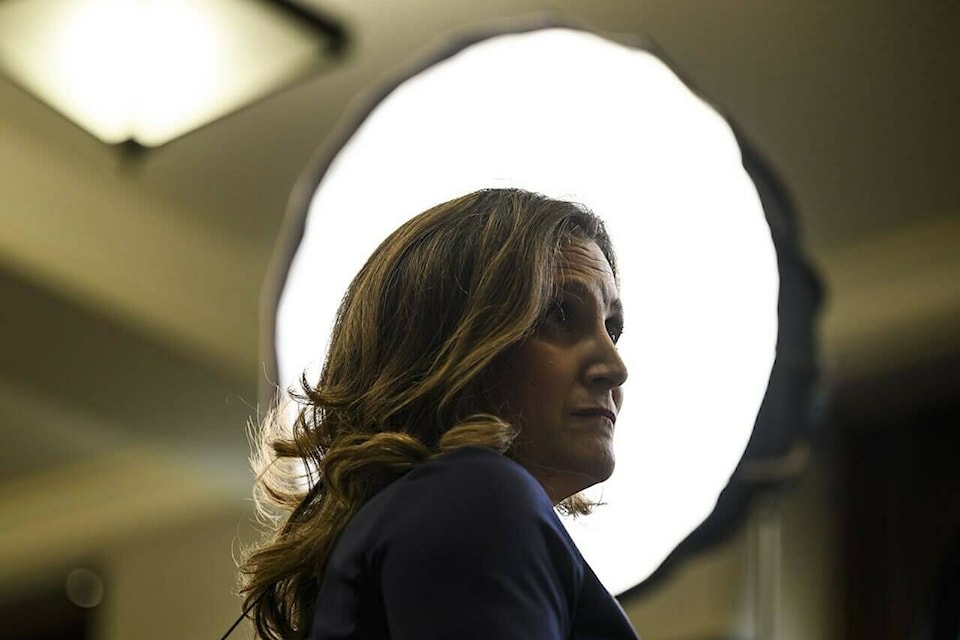Dennis Mathu and Stephanie Gordon first started posting financial-advice videos on YouTube three years ago — a side hustle that helped to scratch a creative itch.
They never imagined it would lead them down some of the most powerful political corridors in Canada.
Mathu and Gordon — Steph & Den, as they’re known online — were among several content creators invited to Tuesday’s federal budget lockup, where they got early access to Ottawa’s new spending blueprint.
It’s an invitation typically reserved for experts, stakeholders and mainstream media. But the federal Liberals are embracing influencers as they seek to win back disillusioned millennials, gen-Z voters and others who consume information through social media.
“They are seeing we are building this audience and they want to tap into that,” said Gordon, 27.
Steph & Den has a target audience of 18- to 34-year-olds and 750,000 followers across multiple platforms. That includes TikTok, a popular video app that has been banned on federal government devices under Prime Minister Justin Trudeau over privacy and cybersecurity concerns.
“They realize that a lot of young people do not watch the news anymore. They don’t consume traditional media,” said Reni Odetoyinbo, 27, who was invited to attend the last two federal budgets by the finance minister’s office.
“Especially for people my age. This is their main source of news.”
Neither the office of Finance Minister Chrystia Freeland nor the Prime Minister’s Office were willing to answer questions about the strategy.
But they did say that influencers are not paid when invited to government events, which included housing announcements in Toronto in the weeks before the budget.
It’s about connecting with Canadians where they are, said Mohammad Hussain, a spokesman for Prime Minister Justin Trudeau.
“Canadians are consuming digital content more and more,” Hussain said in a statement. “As the media landscape grows, so does our approach to how we communicate.”
When the budget landed Tuesday, Danica Nelson, 33, documented the day on her Instagram account. She has 24,000 collective followers with a core audience between the ages of 25 to 45.
Nelson and the six other financial content creators reviewed the budget before it was tabled in the House of Commons.
They also met with several ministers, including Housing Minister Sean Fraser, Youth Minister Marci Ien and Freeland, where they were able to ask questions.
“What I appreciated about this convo is that they really wanted to ensure we (as millennials and generation Z) saw ourselves in it, and if we didn’t they wanted to dig deeper,” Nelson posted on Instagram alongside behind-the-scenes videos and photos.
It was more political access than the mainstream media received that day.
As they spend the coming days going through the budget, the creators will develop content around it, focusing on topics of interest and answering questions from followers.
“It’s so easy in the online world to see headlines and high-level information but not actually know how it applies to you,” Gordon said.
“It almost creates some angst in people, because they’re like, ‘What is the actual information I need to know?’ That’s the piece that needs to be communicated more clearly to people.”
The Canadian government isn’t alone. For years the White House has been briefing influencers on topics such as the Russian invasion of Ukraine, and has invited them to events like the state of the union address.
And when U.S. President Joe Biden visited Ottawa last year, YouTube helped connect First Lady Jill Biden and Sophie Grégoire Trudeau with The Sorry Girls for a sit-down interview about design. The resulting interview was uploaded to The Sorry Girls’ YouTube page, which has more than 2.2 million followers.
It’s common for the tech company to facilitate introductions between governments and content creators, YouTube said. Last year’s federal budget is an example of that, when Freeland’s office asked the company to connect them to Canadian content creators who focus on money.
That’s how Odetoyinbo got invited to last year’s budget, where she ultimately made about six videos breaking down the document to her 150,000 collective social media followers.
“I think it’s a really good effort on the government’s part to reach people in a language they understand,” she said.
And despite their followers admitting they don’t read or watch traditional news, the content creators say they still have a thirst for what’s happening — as long as it’s delivered via social media.
“Traditionally this is one of the things where people tend to tread lightly,” said Mathu, 28. “But I think it’s one of those things that are going to become more of a norm.”
READ ALSO: Liberals file a federal budget for young voters, will it work?
Mickey Djuric, The Canadian Press
